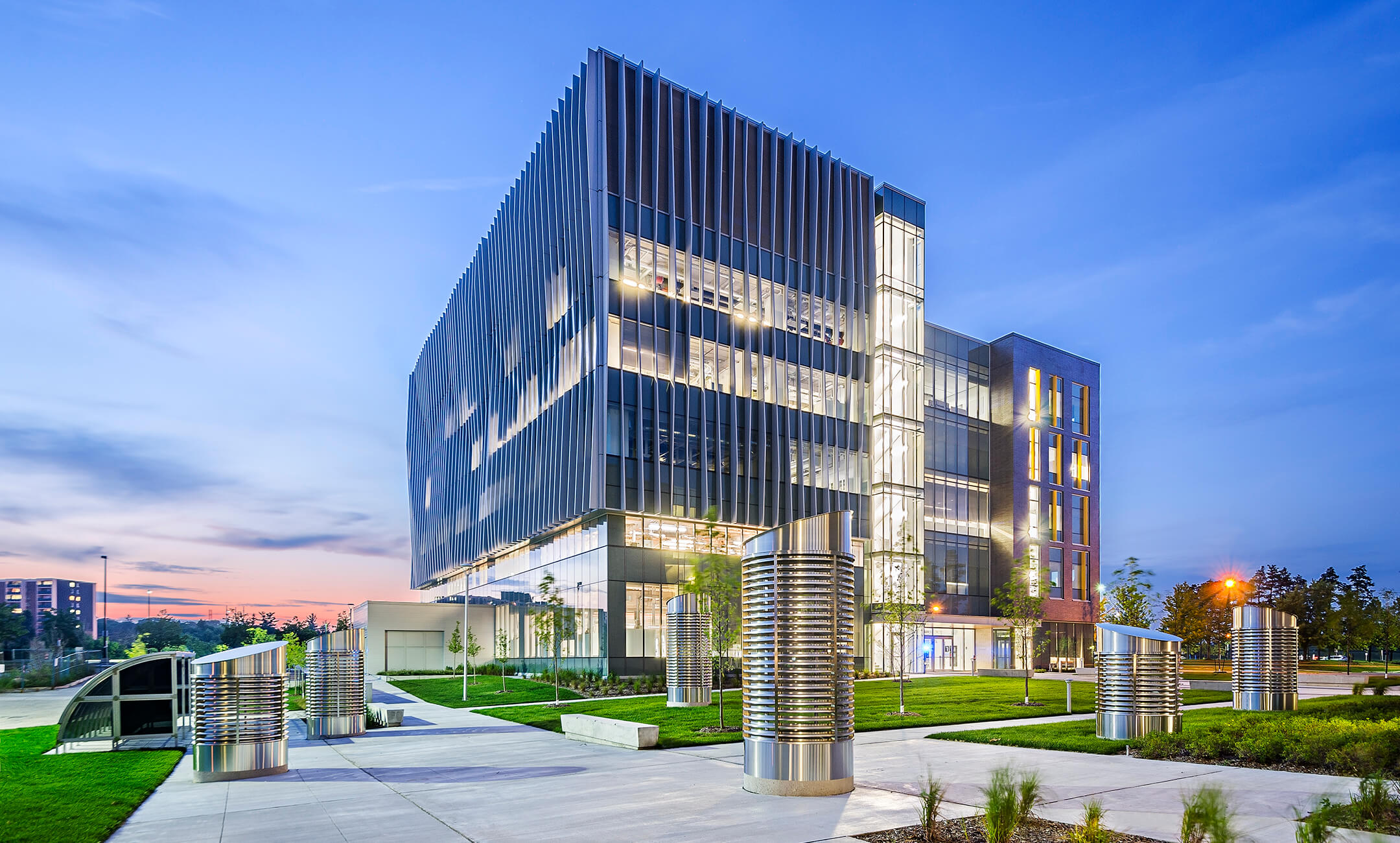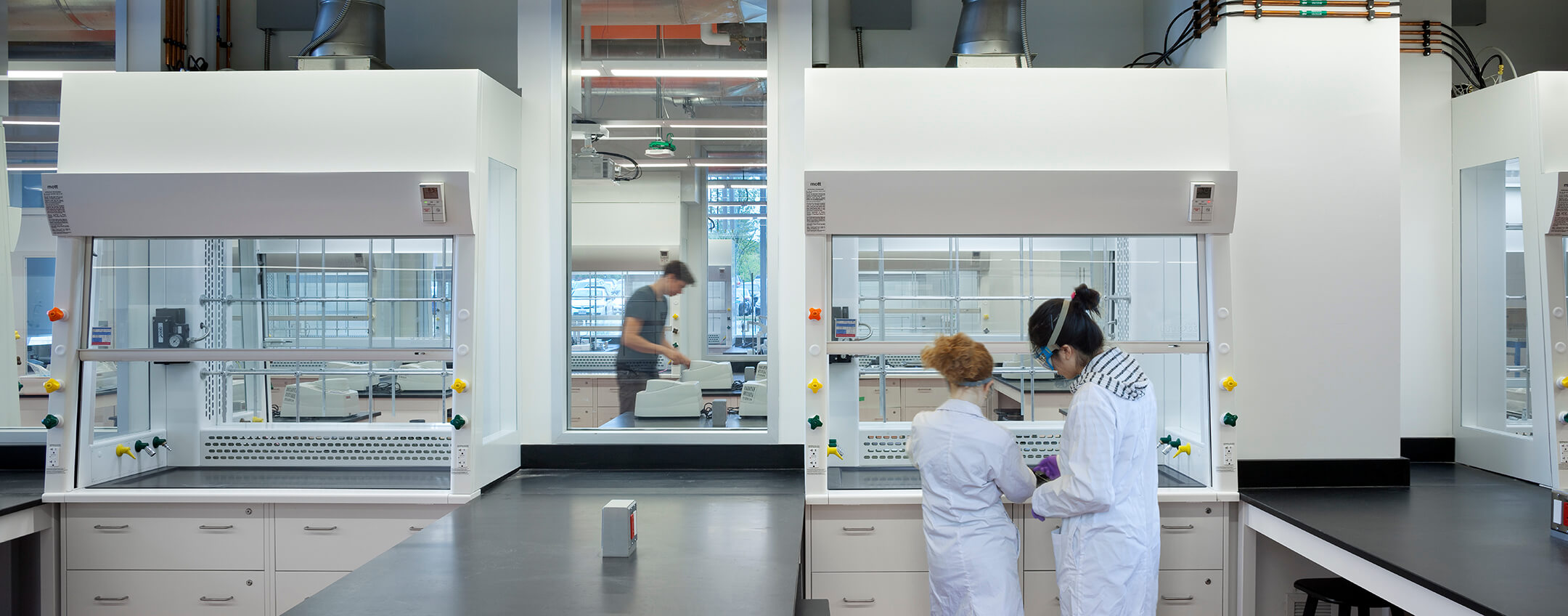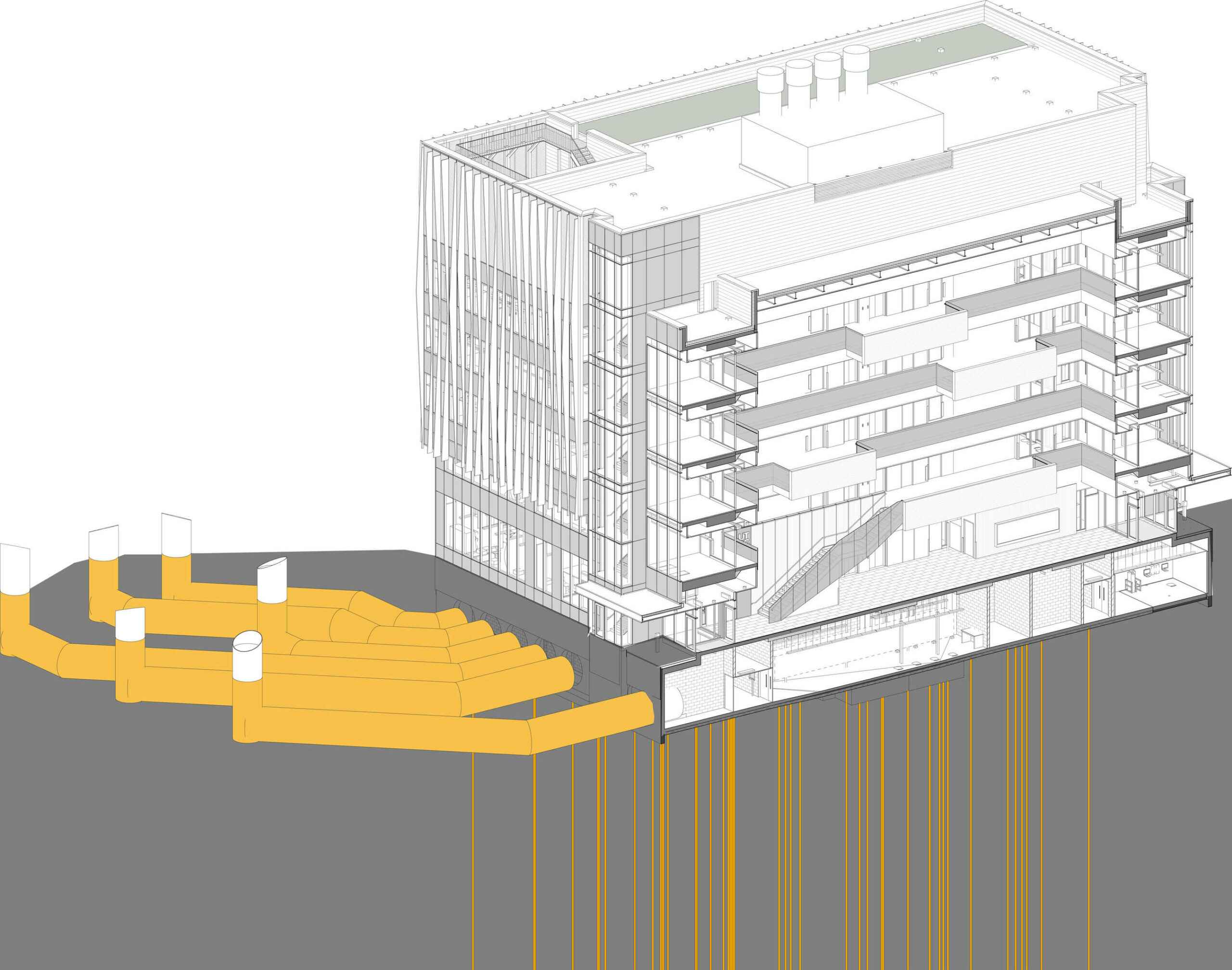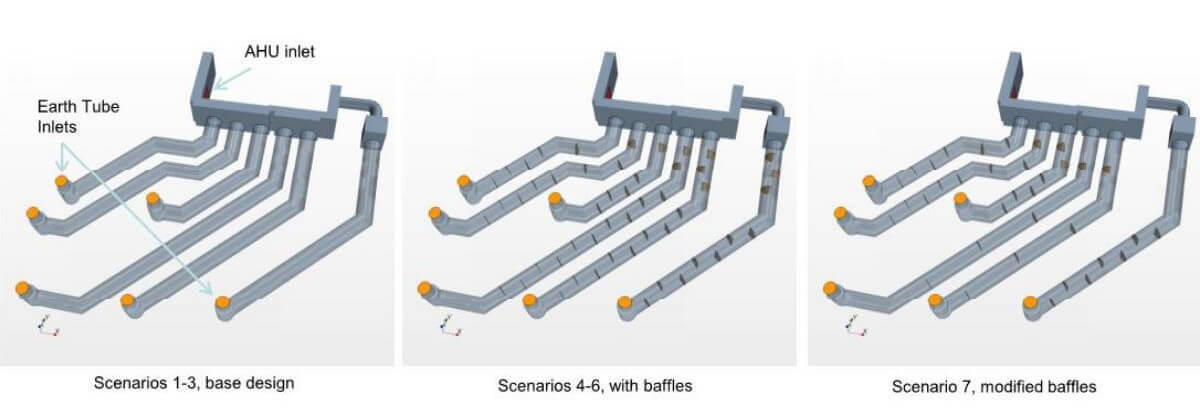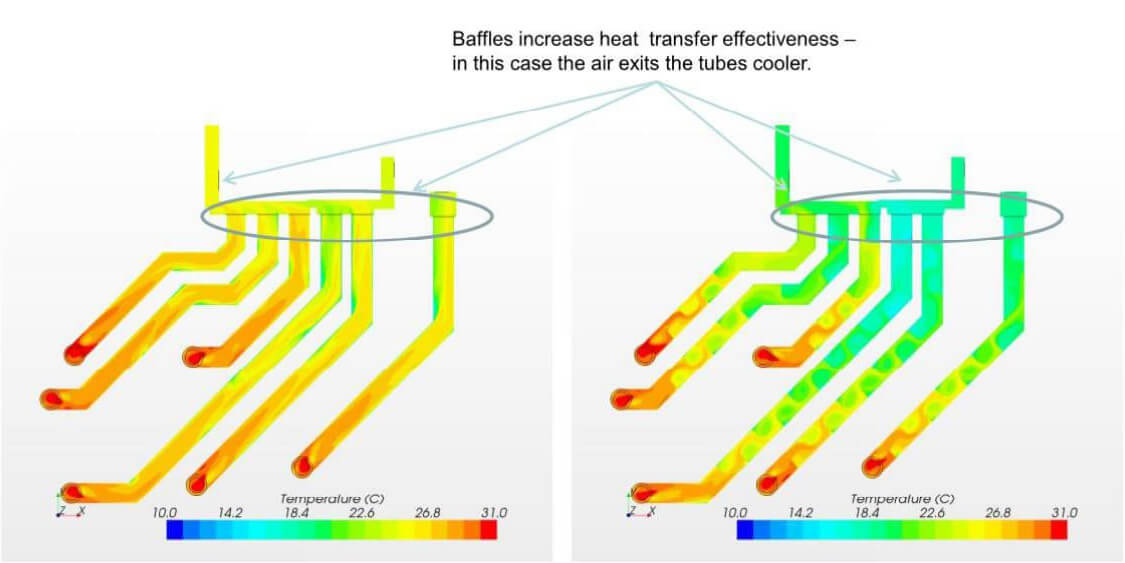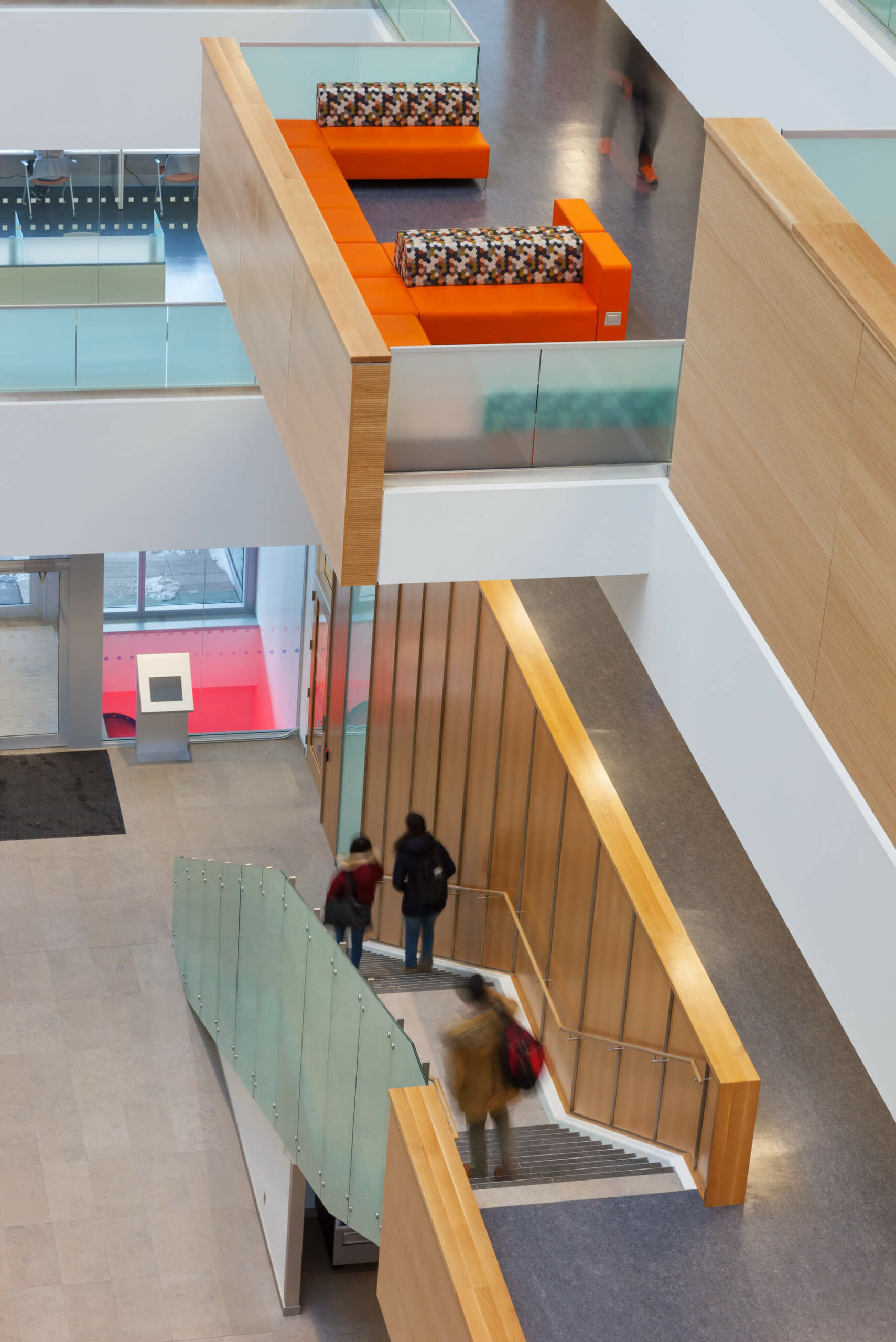Using Earth Tubes to Improve Energy Efficiency in a Research and Teaching Laboratory
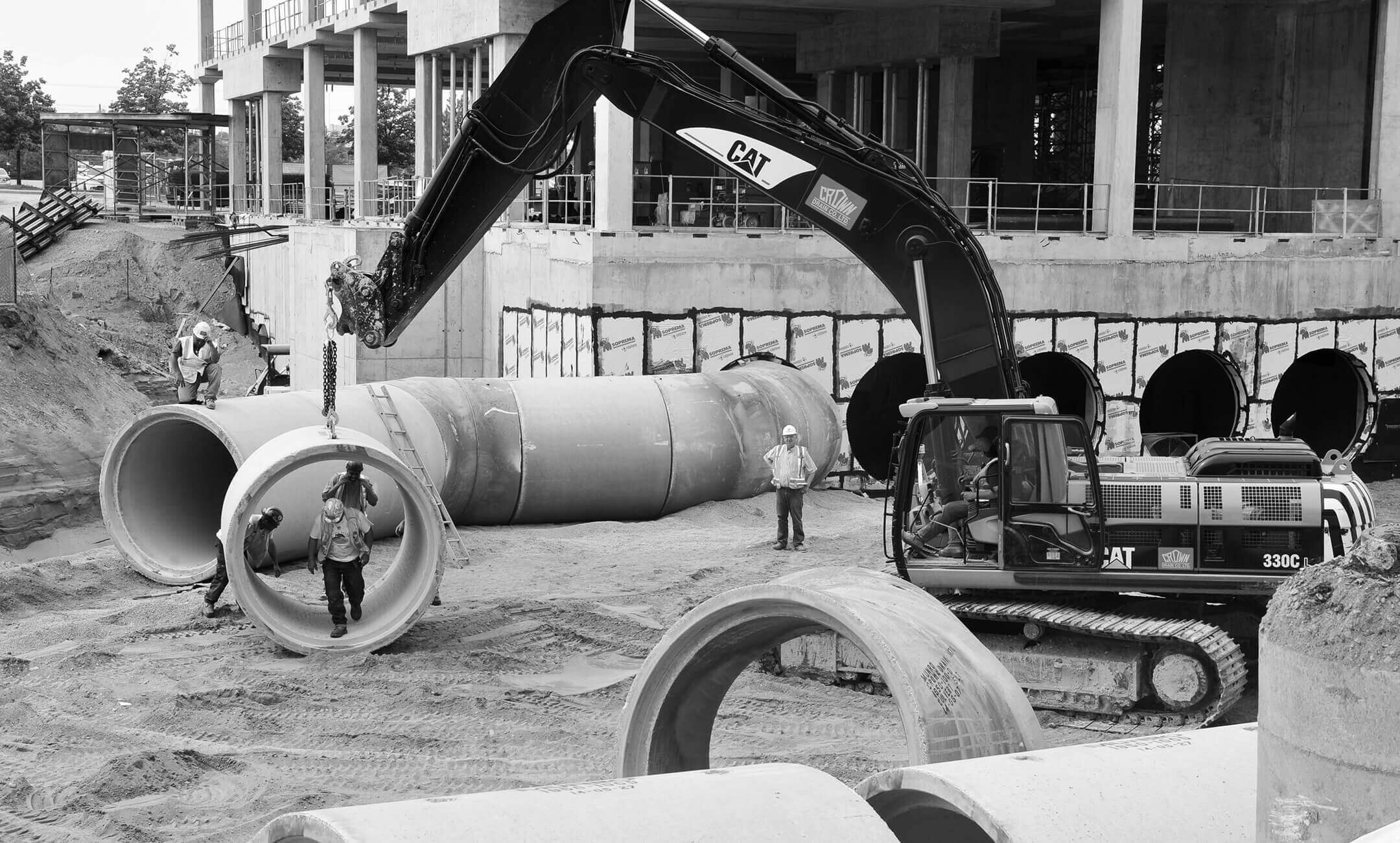
The LEED Gold Certified Environmental Sciences and Chemistry Building at the University of Toronto Scarborough features many unique and progressive systems intended to achieve a significant reduction in energy cost, and improve energy efficiency in a process-energy-driven building.
As an active research and teaching laboratory with nearly 120 fume hoods distributed in various labs throughout the laboratory wing, ventilation and make-up air posed a significant challenge. To improve energy efficiency, a series of earth tubes were designed to help temper incoming fresh air drawn from the adjacent courtyard before introducing it into the building in the office wing, then using a cascade effect as makeup air for the lab wing. Additional fresh air is added at several points to ‘top-up’ and provide the necessary volumes. This configuration not only maintains exceptional indoor environmental quality, but also allows for differential pressurization between the administrative wing and laboratory wing, which is essential for occupant safety.
To optimize the efficiency of this system, a computational fluid dynamic (CFD) analysis was performed on the proposed design, and identified opportunities for improvement, specifically adding baffles and modifying their spacing throughout the tubes to reduce stratification, control static pressure, and achieve a uniform distribution across all six tubes. Based on the results of this analysis the modeled heat transfer effectiveness of these tubes increased from 29-32% to 51-56%.
The ESC building is not only a research and teaching hub, but also acts and an educational tool and showpiece for green building technologies. While conventional buildings tend to enclose mechanical and electrical support services behind walls or above a ceiling, here they are left exposed to showcase the complex network of air distribution, support services, sensors, and infrastructure.
One of the earth tubes is translucent below the entrance vestibule, where an information kiosk explains the technology. A glass screen and floor opening permit students to see the earth tube in action; wind deflectors and coloured LEDs are integrated to illustrate the air movement within the tube and emphasize the heating and cooling these tubes extract from the latent energy of the soil. The ventilation intakes are visible in the adjacent courtyard and highlighted with custom screens and hoods.
